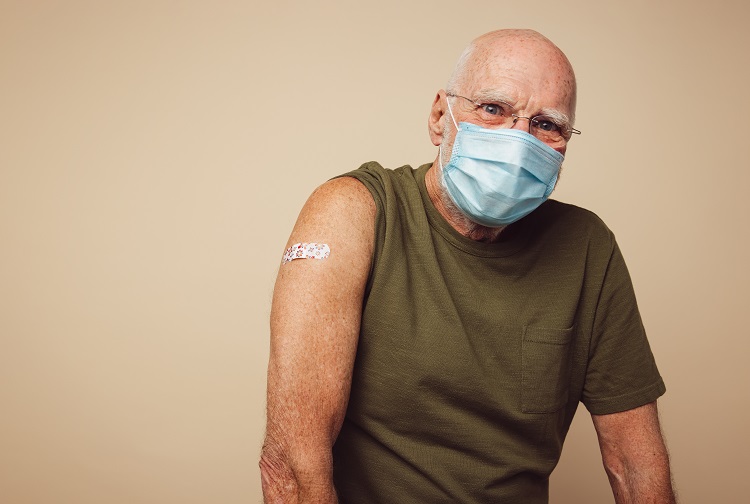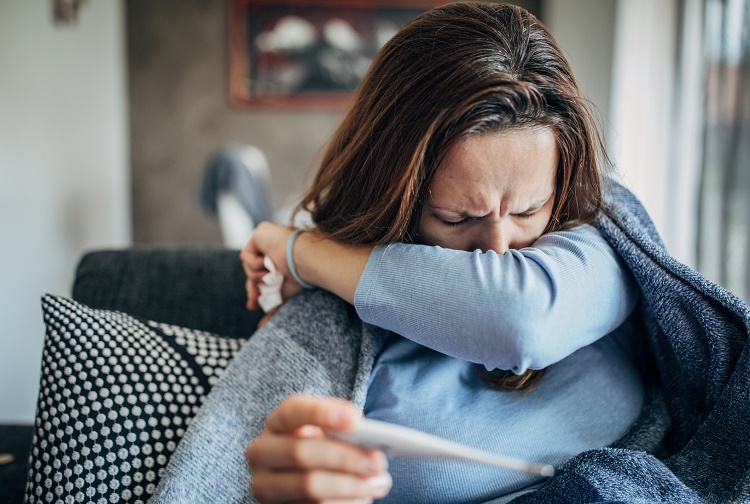
Despite delayed response, patients with cirrhosis gain significant protection from COVID-19 vaccination
A study by researchers, including Dr. Bassam Dahman from VCU School of Medicine, found that vaccination provided patients with cirrhosis 100% protection against hospitalization and death from COVID-19 28 days after their first dose.
July 19, 2021 A study of patients with cirrhosis found that the likelihood of developing a COVID-19 infection decreased 28 days after receiving the first dose of a COVID-19 vaccine. (Adobe Stock)
A study of patients with cirrhosis found that the likelihood of developing a COVID-19 infection decreased 28 days after receiving the first dose of a COVID-19 vaccine. (Adobe Stock)
By Amber Logan
VCU School of Medicine
A study published this month in JAMA Internal Medicine shows for the first time that people with cirrhosis who receive an mRNA COVID-19 vaccine gain important protection against hospitalization and death related to the virus. At the same time, however, the vaccines offer less protection against SARS-CoV-2 infection and take longer to take effect in this population than in healthier individuals.
Results of the study showed that vaccination with either the Pfizer or Moderna mRNA vaccine was not associated with a reduction in infection during the first 28 days after the first dose. However, after 28 days, one dose provided a 65% reduction in SARS-CoV-2 infection and 100% protection against hospitalization or death related to COVID-19. Receiving a second dose increased protection against infection to about 78%.
“There are problems with immune dysregulation among this population, which often makes people with cirrhosis less responsive to vaccinations,” said senior author Bassam Dahman, Ph.D., an associate professor in the Department of Health Behavior and Policy and senior health science and policy analyst for radiation oncology at the Richmond VA Medical Center. “So, while the efficacy rates are comparatively not as high as in the healthy population, they are considered high. I mean, 78% is a great efficacy. However, clinicians may want to caution patients that the protection associated with vaccination does not kick in until 28 days after the first dose, and strict preventive measures should be continued during this period.”
Before this research, how much protection COVID-19 vaccines offered people with cirrhosis was unknown. Clinical trials of the vaccines excluded many people with cirrhosis and other chronic conditions.
“The guidelines recommending COVID-19 vaccination for people with cirrhosis were based on expert opinion rather than clinical data. However, with these results, we are showing that we have the clinical evidence that vaccination does work for people with cirrhosis,” which is especially important as new variants continue to spread, Dahman said.
To determine vaccine efficacy, the researchers compared 20,037 people with cirrhosis nationwide who received at least one dose of either the Pfizer or Moderna mRNA vaccine through the Veterans Health Administration. They compared infections and outcomes in this group to another 20,037 matched patients with cirrhosis and similar COVID-19 risks who were not vaccinated.
Vaccines were administered between December 18, 2020, and March 17, 2021. Interestingly, more than 99% of participants who were eligible to get a second dose within the CDC-recommended six weeks of the first dose did so. “With the VA system, we do not see the hesitancy that we are seeing in [some other] communities,” Dahman said.
The research team was led by Binu V. John, M.D., M.P.H., affiliate associate professor at the University of Miami Miller School of Medicine and associate chief of medicine and chief of hepatology at the Miami VA Health System. Other members of the team were affiliated with Yale University, the West Haven VA, University of Pennsylvania and the Philadelphia VA.
Services supporting the analysis and interpretation of the data of this project were provided by the VCU Massey Cancer Center Biostatistics Shared Resource, which is supported, in part, with funding from NIH-NCI Cancer Center Support Grant P30 CA016059.



